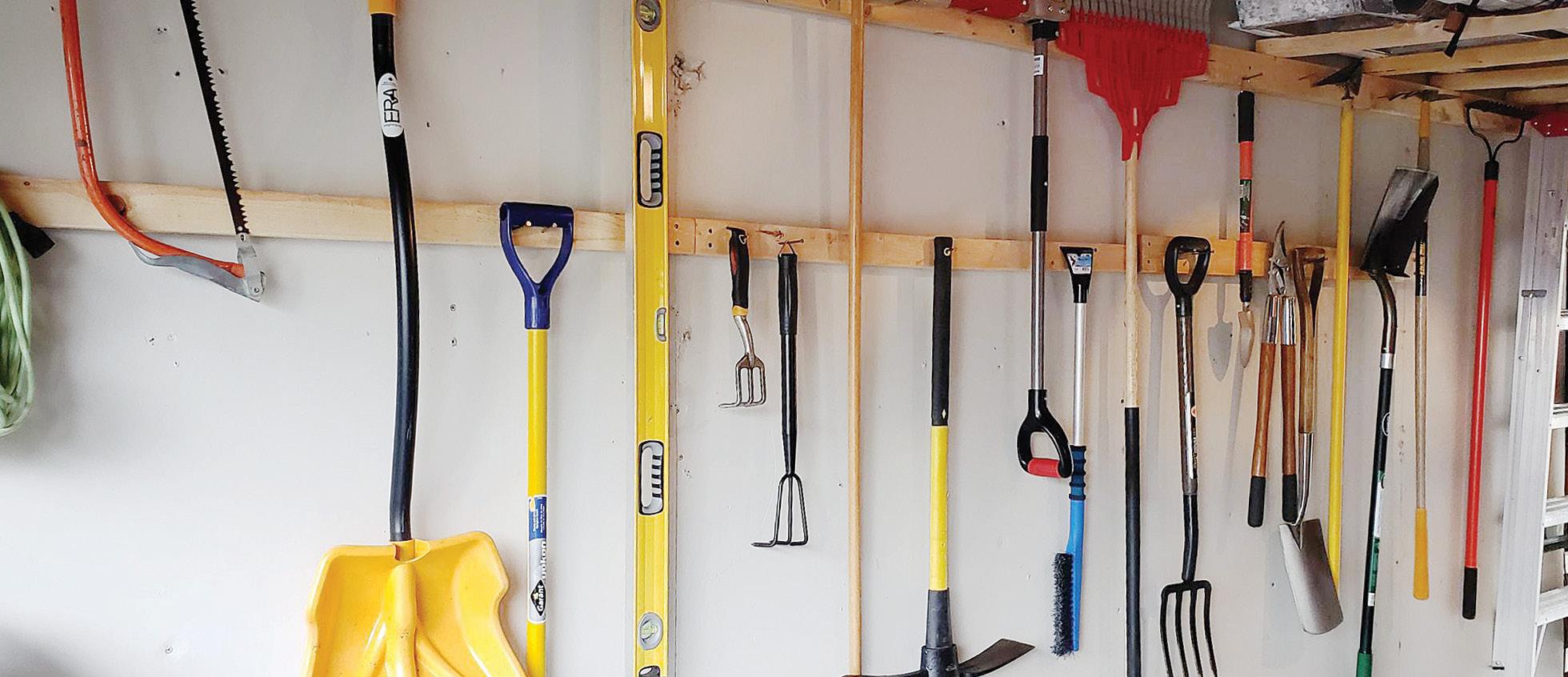End of season tool care
S
top! Don’t pass this article by, thinking “ach, I’ll do it some day.” Today is the day. Wouldn’t it be great to keep your current garden tools forever? Or do you like shelling out for a new trowel every two years? Clean off dirt and rust Get grime off by soaking in soapy water for a few minutes. Sap will require WD-40 or Citrasolv to clean off, or a whole lot of elbow grease. Get rid of the sap so your tools will be sparkly at the end of all this work. Rust can be removed with a wire brush, steel wool or fine-grit sandpaper. You can take secateurs and loppers apart if you’re ambitious. If not, just do your best to get them clean around the joint. Sharpening tools Now is the time to sharpen your shovels, secateurs, hoes and scissors. If you have a place to take them for service, go for it. Otherwise, set aside an hour and do them all. If you don’t enjoy it, well, it’s just once per year. If you have a shop with a table vise, it will be easier. Otherwise, clear a table. Ask for this at your hardware store: a bastard mill file. It’s a good place to start. A mill file means it’s flat and a bastard file means it’s of medium coarseness. Also pick up a diamond file, which is embedded with diamond dust. The mill file is for shovels and hoes, the diamond file is for secateurs and scissors, which need a more finely sharpened edge. The cutting edge of a tool is bevelled. Place your file at the angle of the bevel and file toward the cut edge. Apply medium pressure. Do this all along the blade until the bevel is shiny. Then turn the tool over and do a smooth, flat pass with the file to remove any burrs. Finish and hang With everything clean and sharp, you can go a little bit further by giving wooden handles a bit of effort. Sand them smooth and rub oil into them. Put your jointed tools back together (if you took them apart). Apply a little oil to the moving parts and adjust the nut so that the tool moves with ease but is tight enough to be effective. Finally, one of the most impor30 • 2020
Taking care of your tools ensure they’ll be around for many more seasons.
Scan me Watch this video on how to clean a folding saw blade. https://www.youtube.com/watch?v=K7TqOuox2u4
tant things you can do: store your tools. Keep the working end of longhandled tools off the floor and keep all tools out of the rain, snow, sleet and sun. Easy way to keep tools happy Get a bucket, like a 5-gallon (19-litre) one. Home Depot sells them for about $4. Fill it with sand. Where do you get sand? If you don’t have a source, buy it from the same place as you bought your bucket. Hardware stores sell sand in 20- or 25-litre bags. You can use play sand, but construcIssue 1
tion sand will work better at honing tools. Put the sand in the bucket. Add four cups of oil. What kind of oil? Doesn’t really matter. You can use machine oil, mineral oil, baby oil, even vegetable oil. You can mix it if you want or leave it for the oil to permeate the sand. When you’re done using any kind of metal tool, plunge it into the bucket a few times to clean it. Keep the bucket of oily sand next to where you store your tools. It’s too heavy to move. Through the gardening season: dealing with diseased plants You’re forever being told to clean your tools between cuts when dealing with various nasty diseases like verticillium wilt, as well as between plants. Don’t use bleach for this job because bleach pits metal and kills the plants it comes in contact with. Use rubbing alcohol or Lysol. You can spray or dip and wipe the tool dry. C localgardener.net





















